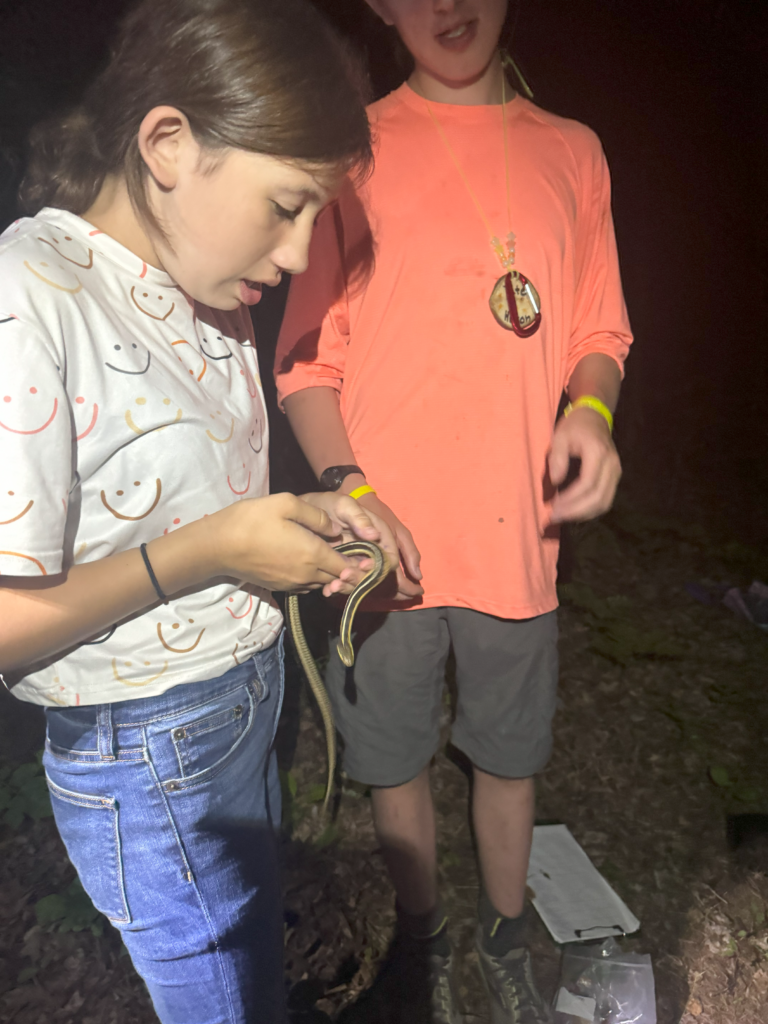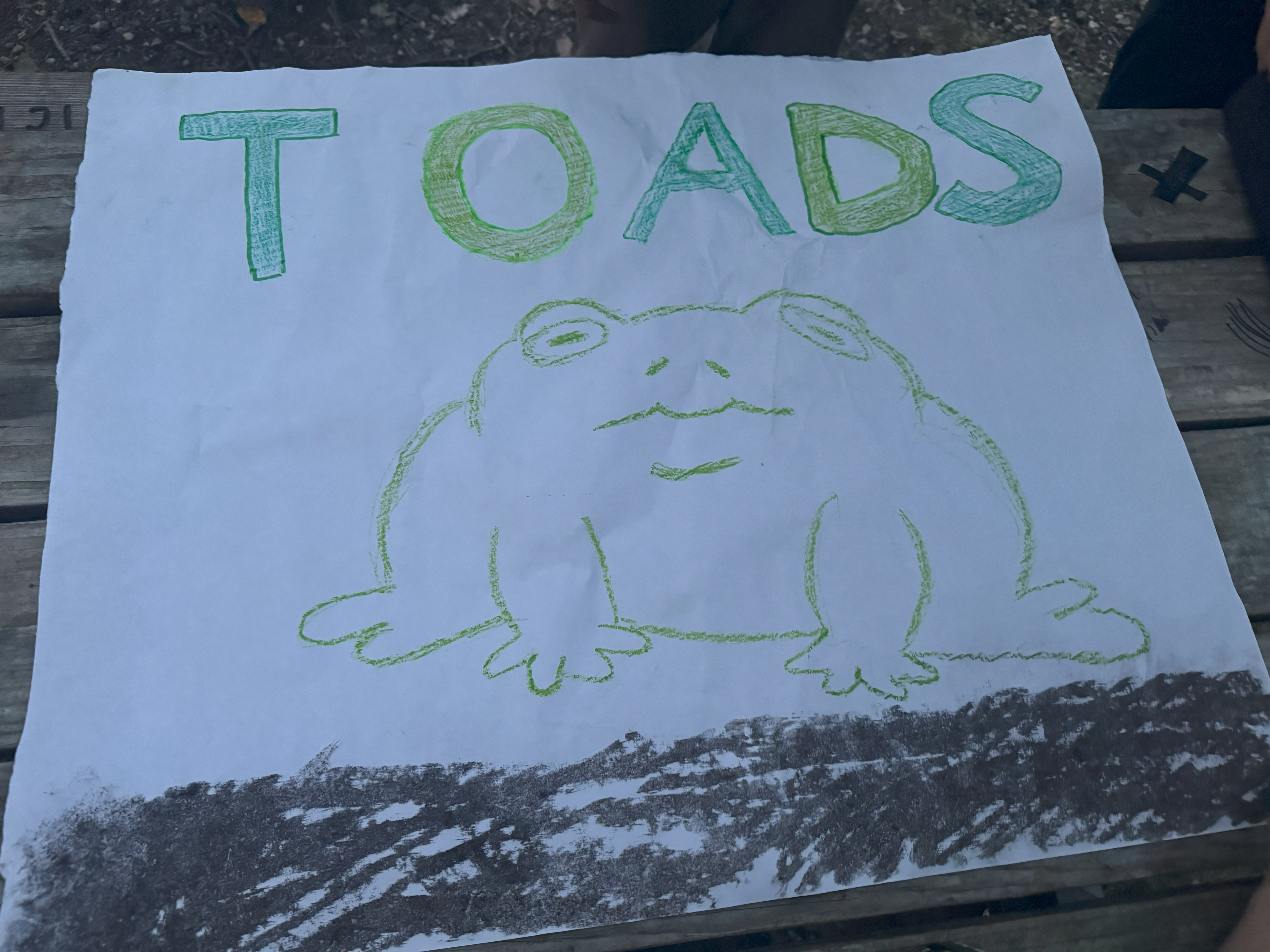By: Sophia Loureiro, 2024-2025 SPARCnet RaMP Mentee

If you told little Sophia that much of her future career would be spent outdoors, she would have turned and looked at you with her brow raised in blatant skepticism. Growing up in the metropolitan bustle of Los Angeles I was quickly acclimated to the blares of car horns, and the pockets of green spaces that did exist were the few small parks scattered throughout the city. I was fortunate enough to live within walking distance of Will Rogers State Beach and have many fond memories of walking or cycling with my parents to-and-from the beach.
In my early childhood, I was fixated on the idea that one day I would become a dentist. I loved going to the dentist, because a small aquarium was one of the first things to greet me and I was always rewarded with a free toy at the end of every appointment. I didn’t feel particularly passionate about teeth–at the time what convinced me I needed to be a dentist was that it would allow me to make a lot of money. Later in elementary school, my career idea pivoted to orthodontics. Why? Because that made even more money.
What did little Sophia want to do with the abundance of money she was set to make from being an orthodontist? Own a large property that would host almost every animal imaginable. Little me envisioned an elaborate garden where I would grow produce, and I would have acres upon acres to have animals big and small run about. Maybe I would let Mom and Dad visit every once in a while.
I was extremely fortunate to attend a public elementary school that had enough funding for a handful of field trips every year. My favorite field trips were when we got to go to STAR Eco Station in Culver City. The Eco Station, as we called it colloquially, works collaboratively with the U.S. Fish and Wildlife Service to rescue illegal or abandoned exotic wildlife, and use these animals as an environmental education tool. One of my most vivid memories is when I was one of several children who volunteered to hold an albino Burmese python, and honestly, it was probably at that point that my love for herpetofauna was locked in.
“My love for wildlife has always been there, even though it took me many years to realize that I absolutely had to make a career out of it.“

Most of the media I consumed as a child were TV shows on Animal Planet or National Geographic. I would repeatedly watch the BBC Planet Earth documentaries with Sir David Attenborough as well as the BBC Walking with… series, specifically the Walking with Dinosaurs set. My love for wildlife has always been there, even though it took me many years to realize that I absolutely had to make a career out of it.
Fast forward to 2024, I am a recent graduate of Oregon State University’s Fisheries, Wildlife, and Conservation program, and have just begun my position as a SPARCnet RaMP mentee under the tutelage of Dr. Alexa Warwick. I love salamanders and biological research, but much of my heart and interests lie within the human dimensions side of science; as a SPARCnet RaMP mentee I am getting to explore this realm of science more. Recently, I agreed to participate in helping teach wildlife workshops at the 4-H Great Lakes and Natural Resources Camp upon Alexa’s invite. I was very nervous, but also excited, as this was my first time participating in youth engagement and STEM education. This camp was curated for children in grades 8-10, which definitely didn’t help with the nervousness as I remembered what my friends and I were like at that age.
Lo and behold, I survived! It was exhausting, but it was also a wholly fulfilling experience. It was a challenge to learn on-the-fly how to adapt my communication style to pre-teens/young teens. As adults, especially within the sciences, it’s so easy to get wrapped up in the jargon that we toss around so often with each other. You can observe pretty quickly when kids are genuinely interested in a topic, and even more so when they have no interest. As a part of my specific teaching for these workshops, I demonstrated how they can look for reptiles and amphibians (invertebrates like worms and roly-polys, too) in the forest. We also introduced them to small-mammal trapping, which included releasing small mammals like mice and chipmunks from Sherman traps, re-baiting and setting them, and recording data on data sheets. If one of the kids expressed great interest in the trapping process, we invited them for our evening trapping sessions as a bonus.

During the informal evening trap checks I had the opportunity to get to know some of the kids better. Several of them would talk with me at-length about the wildlife they see around their homes and in their local communities. Some of them would ask me about my work with salamanders, and I was, of course, more than happy to oblige. I shared with them photos I have taken during various field work, and absolutely took the opportunity to boast about my scaled child, Sundew, who is a rosy boa. My heart swelled with so much pride at the gasps of awe that would be shortly followed by a barrage of questions about salamanders and snakes. I think what will be imprinted on me forever is a moment I had with two 13-year-old girls. They discussed at-length how the wildlife experience and talking with me had inspired them to want their own pet snakes (one even said she really wants a tarantula, sorry, parents!). They even decided that they were going to download iNaturalist and look for herpetofauna upon their return home! I was able to see a lot of my younger self reflected to me in those moments.
This experience gave me so much hope about the future of conservation, and I now know that I want to partake in more youth engagement. These kids are the future, and I hope I was able to inspire them as much as they inspired me.
“I am so grateful for this experience and feel so inspired by these young people who have demonstrated care and passion for the natural world.“
